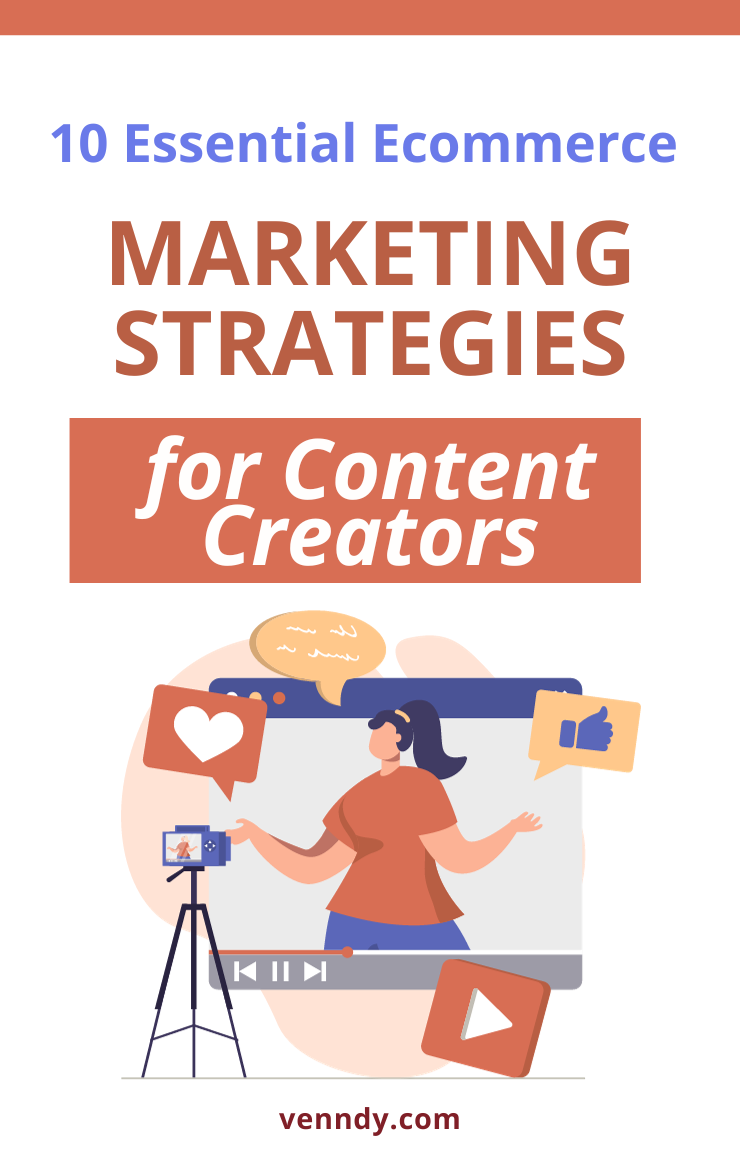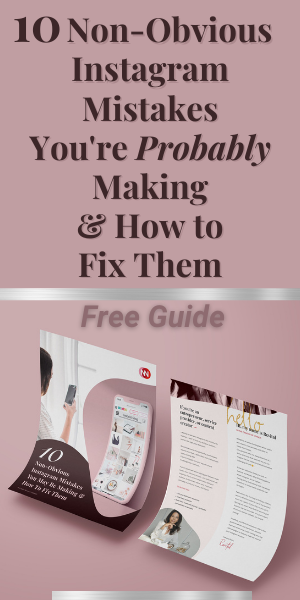If you own an online store, standing out from your competitors means you need to use different marketing strategies. These strategies should focus on making your brand stronger, attracting customers, and boosting sales. Two surefire methods that work when done right are enhancing customer loyalty and ensuring your business ranks well in search results.
With these goals in mind, here are 10 e-commerce tips to help you create an effective marketing plan for your online shop.
1. Create unique content
To launch a successful e-commerce website, you should begin by crafting engaging and unique content. This is a critical step for your success, as it connects with your audience, encourages interaction, boosts sales, and fosters customer loyalty.
Promoting exceptional content is a powerful way to convey your message, present compelling ideas, and leave a lasting impression on users. Striking the right balance between content that captivates users and content that drives them away is vital.

Go the extra mile, invest effort, and create truly captivating content. This builds a robust e-commerce marketing strategy. Even a handful of well-crafted pages can generate revenue for years to come.
2. Social Media Marketing
Social media e-commerce marketing is a great tool. It lets you connect with your industry, customers, and the market in a personal, public manner. You can use social media to increase engagement, drive more visitors to your website, and expand your customer base.
It's cost-effective (unless you hire someone for it) and an excellent way to build and nurture customer relationships. It can also help you connect with new users through sharing, recommendations, and updates on what people are doing with their friends or followers.
Social media can significantly impact your brand awareness. Using various social platforms creates a lasting impression of your product as potential customers encounter your posts, sites, product pages, and promotions.

Using different social media platforms for specific purposes enhances your company's online presence and diversifies your efforts, helping you cater to your customers' evolving needs and growing your business.
Maintaining a consistent tone and company personality on social media is crucial as it fosters trust among your audience. To establish and maintain brand recognition and authority, ensure your team aligns with your company's communication style.
The best social media platforms for your product or service will vary. Achieving success on social media depends on engaging text and images to bring visitors to your website and product pages. Not all social media platforms will align with your goals. Some potentially useful options include Facebook, YouTube, Pinterest, Instagram, LinkedIn, Tiktok, and Twitter.

When crafting a social media marketing plan, it's crucial to grasp what each platform emphasizes and understand your target audience. Identifying your ideal potential customer will steer your e-commerce marketing efforts and help you select the most appropriate platforms.
3. Email Marketing
Email marketing is one of the best ways to connect with your customers. It's a crucial part of ecommerce marketing, and if you doubt its effectiveness, you're wrong. By using compelling visuals and well-crafted text, you can send tailored recommendations, product updates, and special discounts to an audience that's already interested in your products.
To connect with your audience effectively, create valuable content in your emails. Whenever possible, personalize your emails. Include the recipient's name in the subject line, or send automated recommendations based on their previous purchases using segmented email lists.

Share what's happening in your business, like upcoming events, new features, or products. Be transparent about your company. You want to engage your customers on a level that piques their interest and keeps them interested in your emails.
Remember to regularly monitor the analytics of your email marketing efforts, and also keep an eye on other elements of your ecommerce marketing strategy. Always adhere to email design best practices to deliver a compelling message and user experience.
4. Make a shoppable Instagram
Shoppable content enhances your social media posts by allowing visitors to buy products instantly, providing immediate satisfaction and eliminating distractions or doubts in the buying process.

For instance, Instagram, a visually focused platform, is great for e-commerce. You can make your Instagram posts shoppable, enabling users to purchase items directly through strategically placed display ads or product tags. Some Shopify brands can even create shoppable posts, where users can click on product tags to see prices and make purchases.
5. Use the VENNDY platform
Using the VENNDY platform you can turn any of your Instagram posts into a collection of clickable, shoppable links. It is a user-friendly platform that helps content creators and influencers make money from their content. It allows them to create shoppable galleries with clickable products and services, earning commissions through affiliate marketing.
VENNDY simplifies the process of exploring, saving, and sharing collections of resources and reviews shared by other users. Unlike traditional magazines, VENNDY operates on a peer-to-peer basis, giving individuals the ability to showcase each other's content.

With VENNDY, you can connect with like-minded creators and reviewers who share your interests in areas like hotels and footwear. This connection can lead you to discover more recommendations that match your preferences. In contrast to Pinterest, which focuses on collecting future desires, VENNDY is a platform for documenting and sharing your past experiences and purchases.
You can use VENNDY to easily engage with your audience by allowing them to show their love for a product, save it for later, and leave comments or questions. VENNDY also lets you share a particular item across all your platforms like your blog, Instagram, Pinterest, and Facebook. This helps build trust because it shows that the product isn't just randomly chosen, but rather something that's a part of your personal story and experience.
Currently, we are not accepting guest posts, but if you're interested in exploring paid collaboration possibilities, please feel free to reach out to us at [email protected]. We'd be happy to discuss potential partnerships.
Due to many requests we apologize for not replying. Please contact us only for paid collaborations.
6. Improve the layout of your website
Once you've launched or revamped your online store, it's crucial to check if your website's design, wording, and where you put buttons that encourage people to buy stuff are all working well. When visitors come to your site, you want to ensure it's effortless for them to complete a purchase, that they naturally want to buy your products, and that it's really obvious how to do it.

You should examine the words on your homepage and product pages, the words in the buttons that encourage sales, and also where you position icons and other things. Different methods for testing usability can help with this.
7. Search engine optimization (SEO)
One of the most crucial ways to enhance an ecommerce website is by ensuring it's well-optimized for search engines. In today's SEO standards, it's more important than ever to keep your website regularly updated with high-quality and relevant content, ensure a great user experience (UX), and minimize errors.
Your website's content should be valuable, trustworthy, and offer information that's helpful and pertinent to your audience's needs. For instance, if you run an ecommerce store selling camping gear, it's a smart move to provide in-depth product details and possibly even dedicate sections of your site to extensive content about camping, equipment, or related topics.

Incorporating keywords naturally into your content will also help your website appear as a relevant result in search engines when users are searching for specific items. Search engine optimization is one of the most cost-effective and high-return strategies for marketing your ecommerce business.
8. Utilize influencers to boost your brand
Depending on the social influencers you select, this e-commerce strategy might not be as cost-effective. Collaborating with influencers who have millions of followers to promote your product or service can be quite expensive.
For many small to medium-sized e-commerce businesses, influencer marketing doesn't have to be expensive. When employing this approach, it's essential to connect with influencers followed by your target audience. Some influencers may request direct payments, while others may prefer commissions based on product purchases using their codes, or they might simply desire a set of free products. It's an investment, but if the influencer you choose has an active and engaged audience, the initial expenditure will be worthwhile.

Micro-influencers with around 12,000 followers can be just as effective for marketing, provided their target audience is likely to buy your product or use your services. Users tend to trust micro-influencers more, considering their recommendations as genuine rather than paid endorsements.
9. Retargeting
People who have previously visited your website and expressed interest are more inclined to make a purchase in the future.
Retargeting involves tracking website visitors and showing them ads as they browse the internet, aiming to bring them back to your site. When these visitors return to your website, they are much more likely to make a purchase.
To run a successful retargeting campaign, ensure that your ads are highly specific. If a customer was looking at a particular product, make sure the ads they see are for that specific product and link directly to its page. Similar to Search Engine Optimization (SEO) and Pay Per Click (PPC) advertising, it's crucial to provide the information the user seeks as soon as they click on your ad.

If they click on an ad for hiking boots and are taken to your camping website's homepage, they won't be pleased. However, if they are directed to the exact pair of hiking boots they were interested in, or even the ones they had added to their cart before leaving your site, they are much more likely to complete a purchase.
While retargeting is becoming more challenging due to the decline of third-party tracking cookies, there are still opportunities to be pursued.
10. Make your customers happy
There are numerous ways to make your customers happy and create loyal supporters of your brand. Consider adding features that enhance your customers' shopping experience. For instance, you can provide free shipping, offer a 15% discount on their first order, give express shipping for orders over $100, and personalize the packaging.
High shipping costs often lead to customers abandoning their shopping carts. By offering free shipping for orders over a certain amount, you can motivate customers to purchase more of your products, making them feel like they're getting better value for their money.

Implementing chatbots is a valuable feature that can be programmed to handle common queries and offer basic information. Customers with questions about your products or services can rely on the chatbot to promptly address their concerns, especially during the checkout process.
Conclusion
To make your online store successful, you must use a strong e-commerce marketing strategy. Just having an online store won't automatically bring in sales. By applying these ten e-commerce tips, you'll create a thriving online shop that draws in customers.









You can choose to comment as a guest.